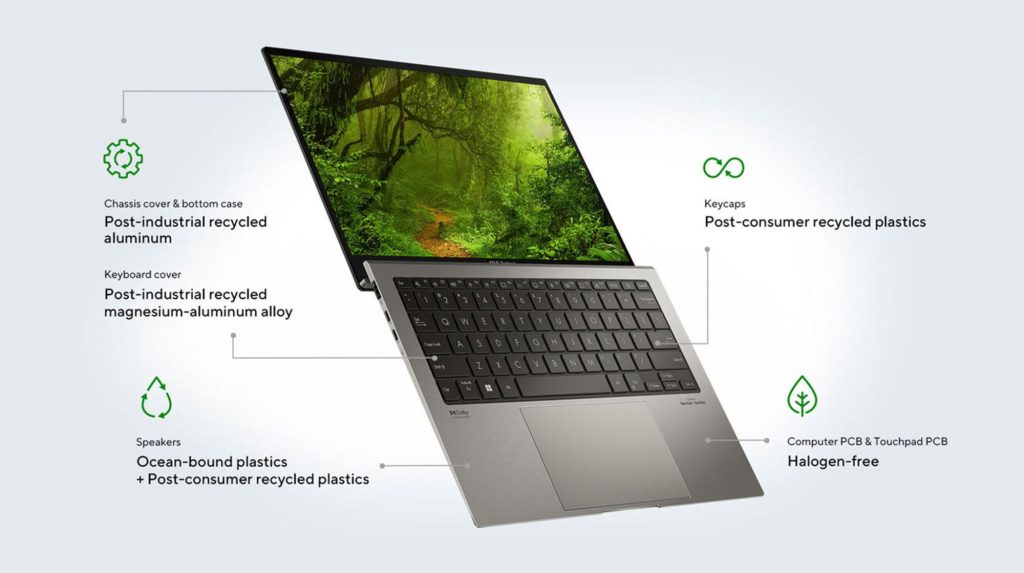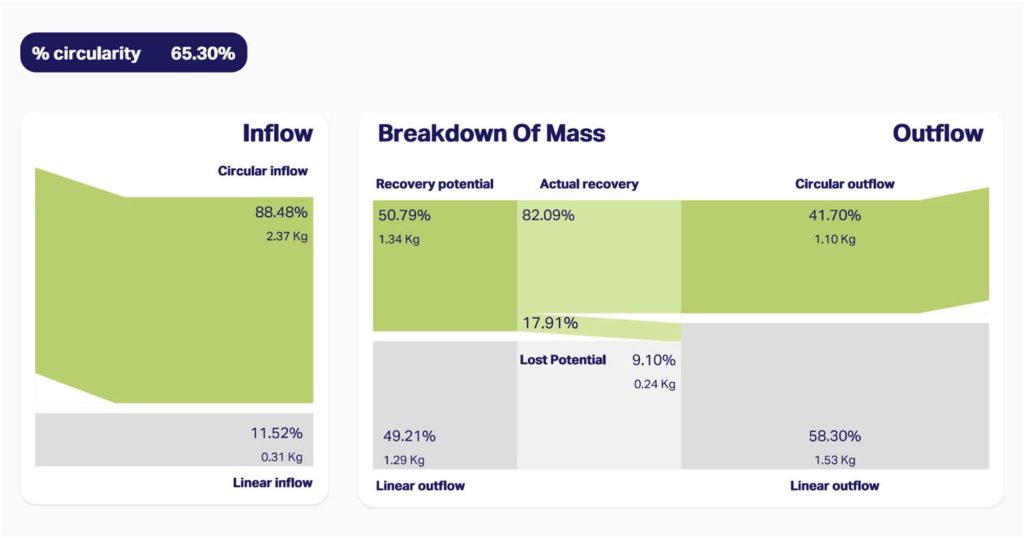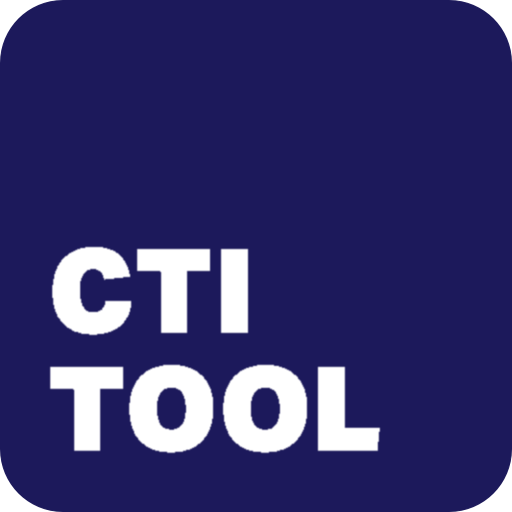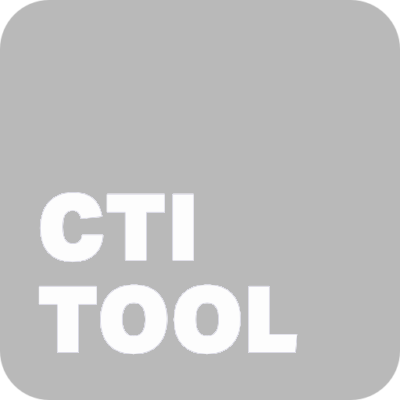ASUS improving
% material circularity by over 30% in their flagship laptop Zenbook S 13
Leveraging CTI Tool, ASUS, the Taiwan-based computer hardware multinational, has identified key areas for enhancement, leading to a significant uplift in their product’s circularity with five pivotal changes
With these interventions, the company almost doubled the material circularity percentage of the Zenbook S13 OLED, going from 35% to 65%. Circular inflow, which expresses the percentage of secondary and renewable resources of the total purchased materials, now stands at 88.48%. Circular outflow measures what percentage of materials get recovered after end-of-life. The company improved its circular outflow by implementing a modular design of the laptop that is easy to disassemble and maintain.

This case study was developed by BCSD Taiwan in collaboration with WBCSD and ASUS. The original case study is available here.
The Circular Transitions Indicators (CTI) framework was developed by WBCSD and 30 of its members. CTI helps companies measure and improve their sustainability performance by providing a simple and sector-agnostic way to measure circularity and giving insights into how to reduce primary resource use and waste generation. Circular IQ’s CTI Tool is the WBCSD endorsed software tool for effectively measuring CTI and leveraging these insights.
“At ASUS, we advocate that sustainability performance should involve strategic indicators that can be objectively measured. Every decision-making process needs to incorporate environmental and social factors to help keep our competitive advantage focused on sustainability. This is consistent with the CTI goal of helping companies maximize their circularity, including recycling, regeneration and reuse.” – TS Wu, Chief Sustainability Officer

“This tool makes it easier for us to understand the CTI framework, methodology and how to integrate into our business practices.” – Irving Lee, Sustainability Compliance Management Dept.
Meet ASUS
- ASUS is a multinational computer hardware and consumer electronics company. Recognizing the detrimental effects of the current linear electronics system, ASUS has embraced a shift to a circular economy as a critical lever to achieve sustainable development.
- To effectively measure its circular performance, ASUS used the Circular Transition Indicators (CTI) v4.0, a comprehensive framework of circularity metrics developed by the World Business Council for Sustainable Development (WBCSD).
- By assessing the circularity of its products and integrating CTI assessment results into the design thinking process, the company was able to develop a more sustainable and circular design for its laptop Zenbook S13 OLED.
- As a result, ASUS almost doubled its circularity, going from 35% to 65%.
The starting point
The COVID-19 pandemic acted as a catalyst for digitalization, pushing various industries and consumers to embrace new technologies and digital solutions for accessing essential services such as healthcare and education. ASUS, as a leading company in the digital era, aims to cater to new consumer needs while making a positive impact on both people and the planet.
As a result of the linear “take, make, waste” system, more than 50 million metric tonnes of electronic waste is created annually worldwide. This is equivalent to the weight of around 10 Great Pyramids of Giza. To reverse this trend, ASUS is committed to taking a leading role in the transition to circular electronics and supporting the development of a circular economy that maximizes the value of products, components and materials throughout their life cycles.
Circular economy targets
Assessing the circularity of the Zenbook S13 OLED with CTI
CircularIQ’s CTI Tool to streamline the data collection and calculations.
CTI has eleven different indicators that a company can select to measure its circular performance.
ASUS chose the following:
Material circularity indicator
Renewable energy indicator
A circular economy requires a transition to using renewable energy sources. The company selected the % renewable energy indicator to measure renewable energy consumption and has, as a result of the assessment, adopted larger-scale renewable energy policies.
Water circularity indicator
The water circularity indicator was selected to look for ways to minimize the water footprint of the laptop.
Using CTI in design thinking
Recognizing that more than 80% of environmental impacts over a product’s entire life cycle is determined in the design phase,2 ASUS integrated the results from the CTI assessment into its design thinking process to produce a more circular laptop. This helped them almost double the % material circularity of the Zenbook S13 OLED.
Circular opportunities
In the pursuit of circular alternatives for the exterior metal parts of the laptop, ASUS faced the challenge of balancing consumers’ requirements for elegant, lightweight and environmentally friendly materials with commercial viability and technical feasibility. The company had to find new material sources that could replace virgin materials. ASUS indicated this was the hardest part of the assessment as the research & development department conducted many engineering tests on different surface treatments and alloy metal combinations to find the optimal circular material. Meanwhile, procurement and project teams evaluated the feasibility of production at scale. Finally, the company came up with a new, more circular design. The company decided to introduce more recycled metals, use more recycled plastic (including ocean-bound plastics) and optimize the packaging. Figure 1 shows the circular design as a result of the CTI assessment.

Figure 1: Circular interventions on ASUS Zenbook S13 OLED
With these interventions, the company almost doubled the material circularity percentage of the Zenbook S13 OLED, going from 35% to 65% (Figure 2). Circular inflow, which expresses the percentage of secondary and renewable resources of the total purchased materials, now stands at 88.48%. Circular outflow measures what percentage of materials get recovered after end-of-life. The company improved its circular outflow by implementing a modular design of the laptop that is easy to disassemble and maintain.

Figure 2: CTI results % material circularity ASUS Zenbook S13 OLED after circular interventions, from Circular IQ’s CTI Tool
The value of CTI
Identify improvement opportunities in your electronics portfolio
Easily uncover which product or packaging improvements move the needle towards meeting your company goals. Compare performance over multiple buying cycles to monitor improvements. Fuel conversations with your buyers in your electronics value chain and enable them to start activating suppliers to offer product- and packaging solutions that meet your goals.
Contact Roy for more info
Book a meeting or connect via linkedin




